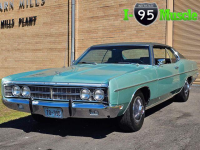ShelbyDawn57
Neo - Philocalist
- Joined
- Feb 28, 2019
- Posts
- 2,151
You know, sometimes in the right car, on the right stretch of road; when the conditions are perfect... Well, it's like sex. When the stars align, it just happens.Since you mentioned this, I would never drive at 150 mph except with a car modified for it, and on a closed track. Also, my own skills couldn't cope with it. You'll notice that stock cars are a long way from the original vehicle. At that speed if the smallest thing goes wrong. . .
And oh, you just passed a state trooper waiting for such a situation. Those guys do know how to drive fast, and they can bring in a lot of back-up as needed.

